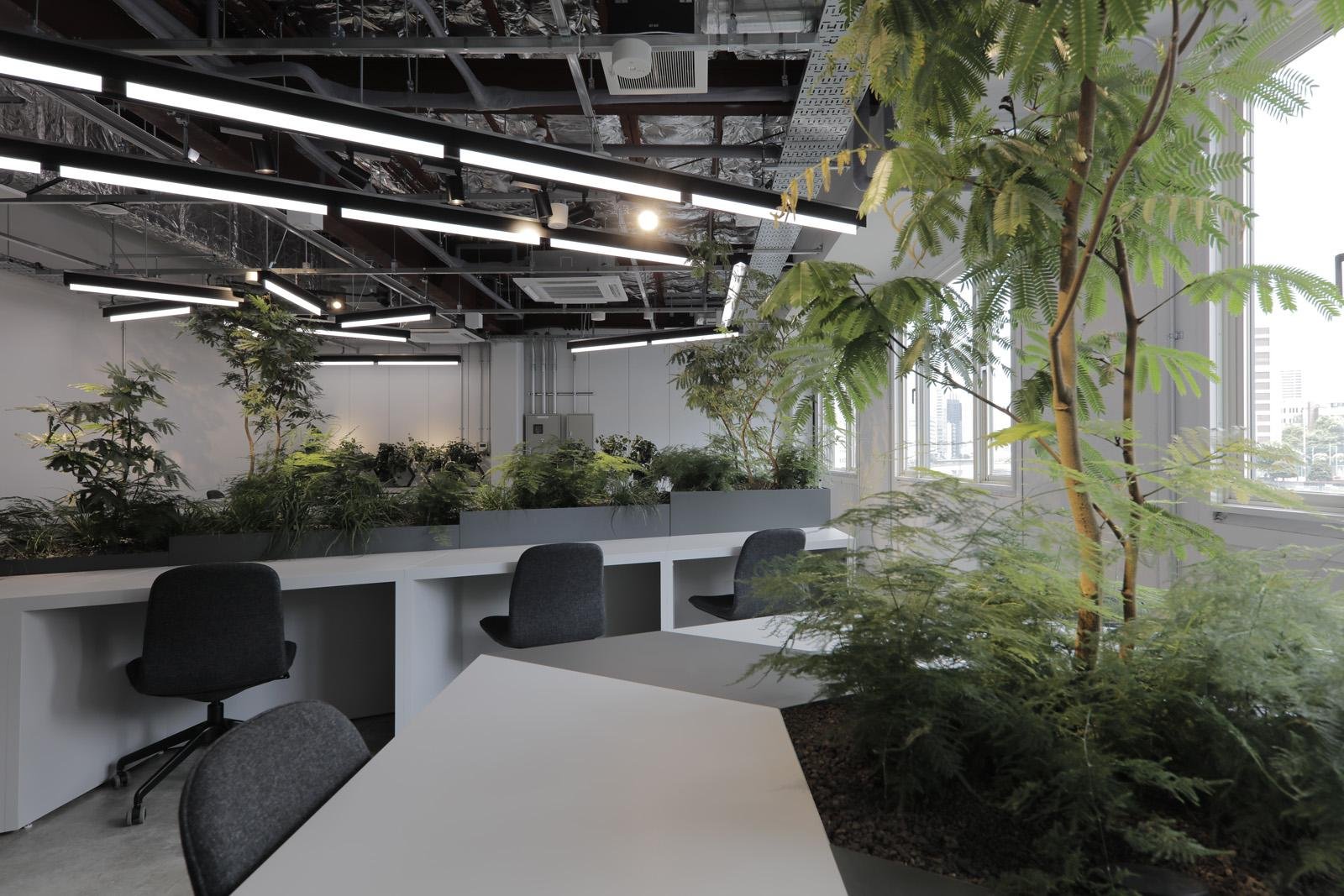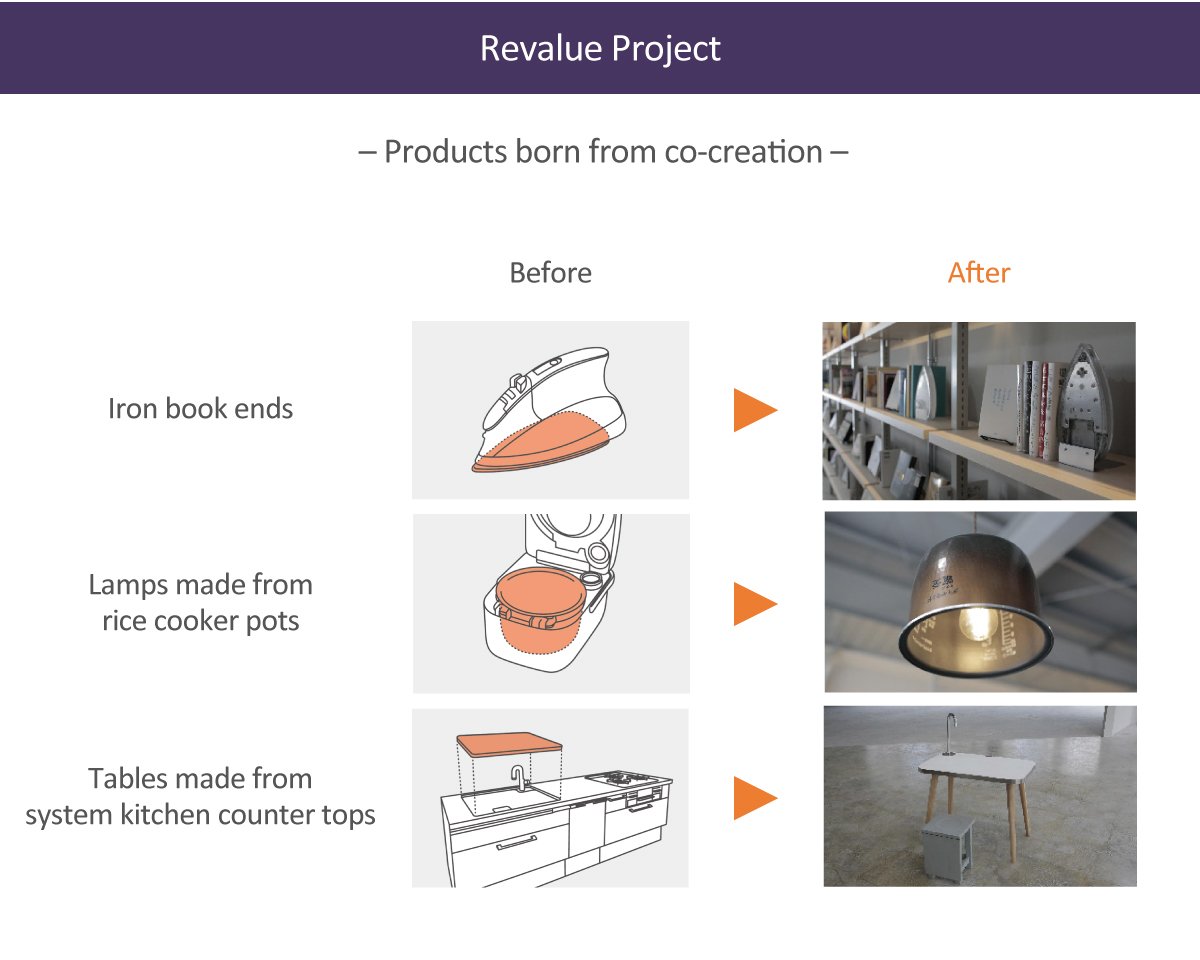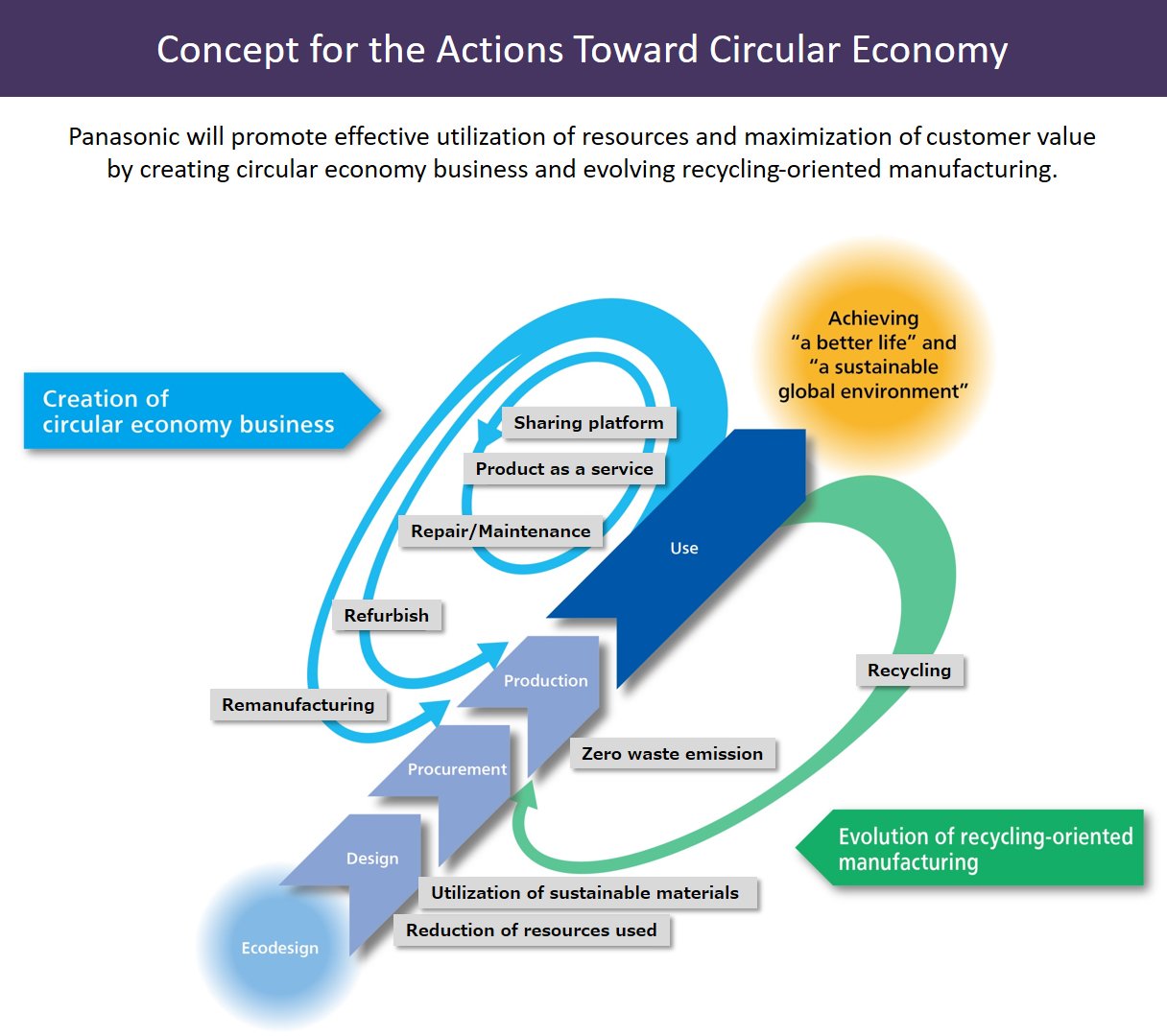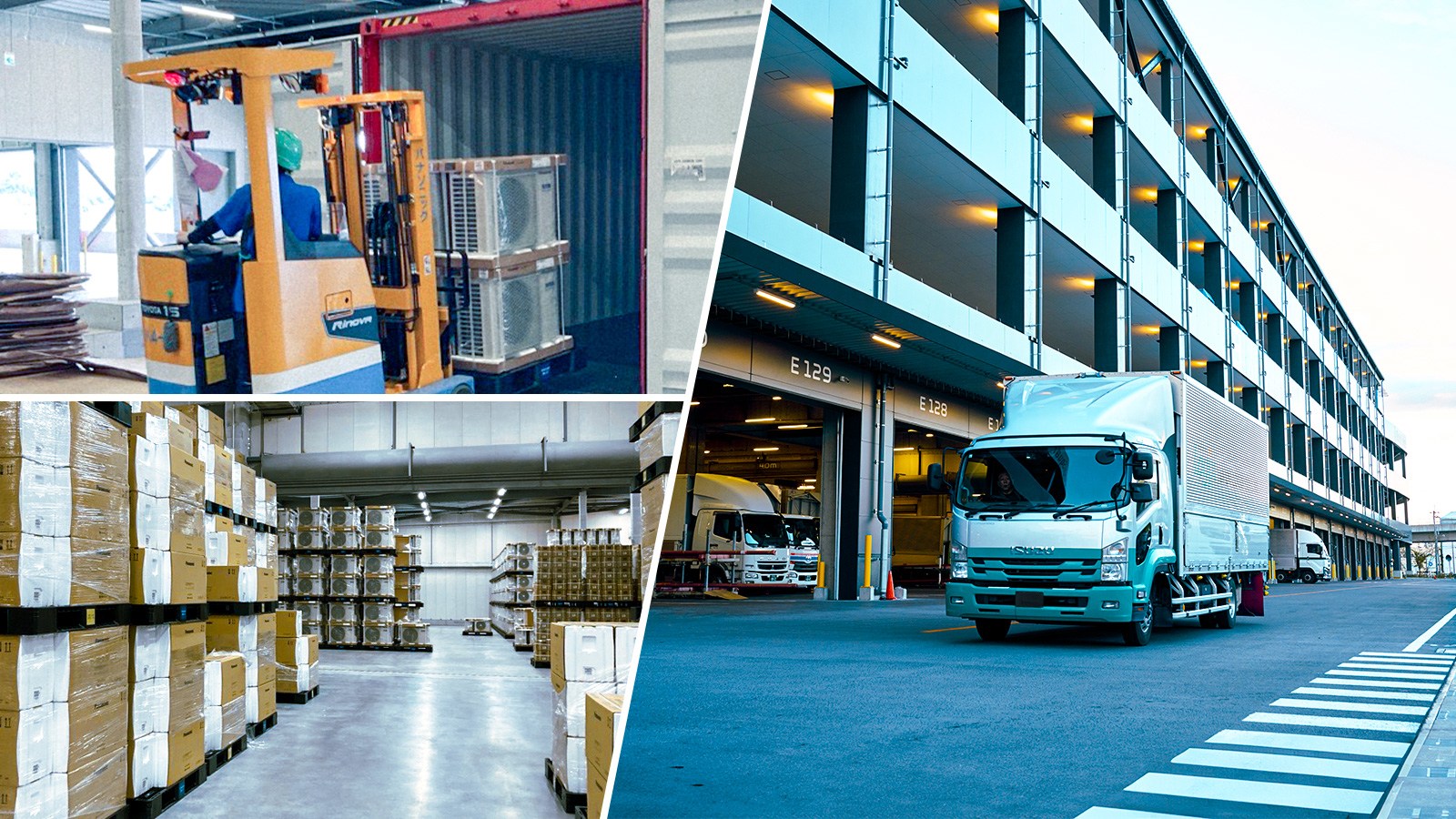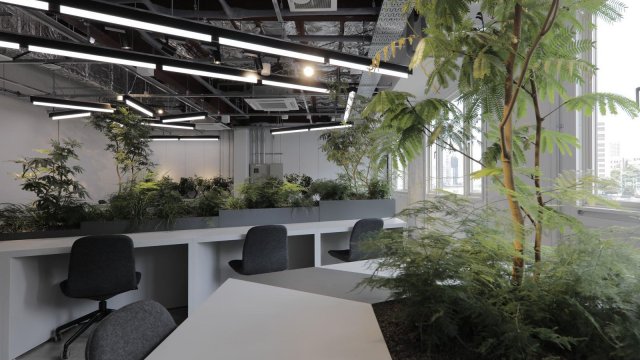
Successfully provided a new space through co-creation
Mitsubishi Estate Residence, an arm of the Mitsubishi Estate Group that mainly handles residential properties, launched its Re-Building Business in 2014, which resurrects old and decrepit buildings. According to Yuki Sakai from Mitsubishi Estate Residence, "Re-Building Business Group takes old buildings and renovates them. That is the mission of this new business group and we are a unique presence within Mitsubishi Estate Residence."
There was great chemistry with this innovative team. The Mitsubishi Estate Group has been mainly active in central Tokyo, specifically in the Otemachi, Marunouchi, and Yurakucho area. They are pioneers who developed the heart of Japan. It was their first time getting involved in a building renovation project in Higashi-Shinagawa, in Shinagawa Ward. Mr. Sakai explained, "The TENNOZ Rim project provided the ideal environment for taking on new challenges. Working with Warehouse TERRADA, a trusted partner in this area, and Panasonic's cutting-edge technologies, we knew we could come up with a completely unique, unparalleled renovation concept."
Yuki Sakai
Leader
Re-Building Business Group
Investment Asset Development Division
Mitsubishi Estate Residence Co., Ltd.
To clarify, Panasonic is the owner of the TENNOZ Rim, and Mitsubishi Estate Residence and Warehouse TERRADA have signed a 10-year tenant contract. Furthermore, Mitsubishi Estate Residence manages the co-working space and Panasonic Lab on the second floor as well as KITEN on the first floor.
For real estate professionals, areas near the Shinagawa Station and Tennozu Isle Station do not yield a lot of benefits. These areas have unique challenges, but Mitsubishi Estate Residence changed their way of thinking and transformed these challenges into strengths.
Mr. Sakai notes, "Team members from the three companies met weekly and discussed ad nauseam to come up with the concept, to decide what kind of space we wanted to create. But our main task was to bring to life the most comfortable environment.
"We chose the canal front for the location of COMORE BIZ so that we can take advantage of the waterfront and the scenic view. COMORE BIZ is co-operated by Pasona Panasonic Business Service and other partners. And it has been designed by taking into consideration the relationship between the ratio of visible green and stress reduction."
COMORE BIZ is all about "tranquility," but Mr. Sakai describes the main cabin as a space for "movement," as a space for spirited conversation and exchange. The Book Park in the middle that sits between two offices is the communication space. "Together, they create a powerful weapon that traditional co-working spaces do not have. We focused on a comfortable environment that people would want to stay a long time in, and this enabled us to create a space people would want to use despite the distance from the station, thereby producing additional value for the project."
According to Mr. Sakai there was little knowledge about what kind of comfortable environment should be provided when renovating a building to improve tenant satisfaction. But looking back on the project, he discovered something new by working together with Panasonic.
"The information that Mitsubishi Estate Group has access to is limited. Panasonic is currently in the midst of transformation, to shake off its consumer electronics image. We were inspired by their energy. Moreover, this was the first time for us to work in this area, so Warehouse TERRADA's powerful network was indispensable. For society post COVID-19, this place will become an attractive third place. We will first communicate our message to people in the community, and in the future contribute to the revitalization of the area."
Updating recycling-oriented manufacturing with the Revalue Project
The "Revalue Project" is another element essential to TENNOZ Rim. Through this project, creators are redesigning waste from Panasonic factories, giving it new life to realize a circular society.
In the Book Park on the second floor, there are lamp shades made from IH rice cooker pots and bookends made from iron plates. In the common lounge on the first floor, tables made from system kitchen sink parts are on permanent exhibit. Panasonic refers to these designs as upcycled products.
From 2010, Panasonic has been promoting recycling-oriented manufacturing to circulate resources. The focus of the Revalue Project is repurposing but as represented by the SDGs, times are changing, and society has been making a shift towards "sustainability." As part of this evolution, Panasonic adopted in 2019 the philosophy of "circular economy," to maximize utility value for its customers by circulating, repurposing, and reusing products as well as parts.
Like TENNOZ Rim, the Revalue Project, aims to repurpose and reactivate through renovation, so it was the precursor to TENNOZ Rim. It all began when the CRE Project Promotion Department reached out to the Panasonic Design HQ, Institute of Future Design about how the TENNOZ Rim may be utilized. Yuichiro Shinkai of the Institute of Future Design describes the project, "During the planning phase, we proposed upcycling and using the waste from Panasonic factories as fixtures. Not only will it contribute to realizing a circular economy, through these upcycled products, we felt that people will be able to experience our passion towards manufacturing that is embodied by our consumer electronics and equipment."
Yuichiro Shinkai
Consultant
Digital Relation Lab
Design HQ, Institute of Future Design
Panasonic Corporation
Mr. Shinkai's idea came from one of the partners' activities, the "THROWBACK Project" undertaken by OpenA, the firm that designed and supervised the TENNOZ Rim project.
The THROWBACK Project was started by OpenA and an industrial waste disposer, Nakadai in 2017. The project wishes to throwback to society things that have been disposed of. They have successfully repurposed products and parts that had been disposed of, for example benches, and tables made from vaulting boxes from schools that closed down, floor lamps recreated from streetlamps used along the highways, and tables featuring a solar panel tabletop. In the words of Kazutaka Ohashi from OpenA:
"We have been working with Mitsubishi Estate Residence on the Re-Building Business, and this relationship led to our first meeting with Panasonic. When Mr. Shinkai approached us, it was a godsend for the THROWBACK Project as well. Getting access to waste materials from the manufacturing process would do wonders for the project's continuity. We do not simply want to create one-off artwork. We want to reintroduce to the market products that can be used in our everyday lives. And we thought this could bring us one step closer to that. We first looked at what kind of waste materials would be available before working on the design."
However, Mr. Shinkai's role within the company is design consulting for projects and new initiatives, so he did not have direct access to factories. That is why the CRE Project Promotion Department acted as the go-between and ended up getting the help of Kensaku Ishibashi from the Environmental Management Department, Quality & Environment Division, Global Environmental Promotion Section. Mr. Ishibashi explained, "My role at Panasonic is to promote circular economy. When Mr. Fukutomi (from the CRE Project Promotion Department) reached out to me and asked if I wanted to work on this initiative together, I felt a great sense of purpose. And I felt motivated to act as the bridge between him and the factories."
Kensaku Ishibashi
Unit Leader
Circular Economy Unit
Global Environmental Promotion Section
Environmental Management Department, Quality & Environment Division
Panasonic Corporation
When Mr. Ishibashi asked the factories to show him what waste materials were available, they responded questioningly, "What are you going to use it for?" Mr. Ishibashi explains, "But when we gave them a sample of the repurposed product, they understood how the materials could be reborn and became interested." As a result of Mr. Ishibashi's efforts, Panasonic's factories signed a suppliership agreement with OpenA.
He continues, "It is not interesting to just make a one-off prototype. Although the scale of these designer products may be small, they helped create a framework that enabled us to utilize parts for repurposed products. And OpenA proposed ideas that Panasonic could not have come up with easily. They have a different way of looking at things, like transforming IH rice cooker pots into lamp shades.
"For years, I have been involved in environmental issues and recycling-oriented manufacturing at Panasonic, but this cannot be accomplished by one firm. TENNOZ Rim is a place for co-creation, so it is the optimal environment for the Revalue Project."
Since the exhibition at the TENNOZ Rim was well received, from June to the end of September 2020, the upcycled products from this endeavor as well as other repurposed pieces from the THROWBACK Project are on showcase in "RELIFE STUDIO FUTAKO (link in Japanese)" set up inside Tsutaya Electrics at Futakotamagawa, Tokyo.
"At Futakotamagawa, these products are being displayed in an environment that more closely resembles people's lifestyles. The Millennials and Generation Z, who will become the key population in the coming future, not only place great importance on utility, but also tend to be intrigued by the products background and story about how they were born. That is why the exhibit at Futakotamagawa tries to show people how these repurposed products can become a part of their lives. The Quality & Environment Division's circular economy project will continue. Just the other day, when we conducted an online seminar, we had about 120 participants, so there seems to be a lot of interest," says Mr. Shinkai.
Mr. Ishibashi states, "To nurture a culture that uses things with more tender loving care--We worked with partners to bring to life a pioneering case example. We believe TENNOZ Rim is a befitting place for communicating and fostering this kind of thinking. We hope that this will eventually travel beyond Japan and spread to other countries."
Promoting circular thinking is the very concept of TENNOZ Rim. From July, a new plan, "Night & Holiday" for after-work and weekend use began in the co-working space. Why not come and experience this environment brimming with ideas for the next generation?
- Reproduced from the website "Mirai-kotohajime," by courtesy of Nikkei Business Publications, Inc.
# # #
- Disclaimer:
- We would like to note that Panasonic Newsroom is not a place to address personal Customer Service issues. Even though this is not the forum, Panasonic is always eager to resolve your concerns. Our local customer services contacts can be found at Global Support or you can see our list of Social Media Accounts to find the right channel for your queries and concerns.
Related Links
- TENNOZ Rim (Japanese)
- The ParkRex Tennoz [the DOCK] (Japanese)
- Mitsubishi Estate Residence Co., Ltd.
- Warehouse TERRADA Co., Ltd.
- OpenA Co., Ltd. (Japanese)
- From Product to Product "Actions for Resource Recycling" - Panasonic Global
- Environment : Resources - Panasonic Global
- Institute of Future Design
Related News
- Co-creating Community Values with TENNOZ Rim: The Role of People, Things, and Spaces in the Age of New Normal (Part 1 of 2) (Aug 27, 2020)
- Plant-derived "Cellulose Fiber" May Change the World in the SDG Age (Dec 04, 2019)
- Sifting through Resources Is Like a "Treasure Hunting": The Job Asked of Panasonic's State-of-the-Art Electric Appliance Recycling Facility (Jun 11, 2019)


